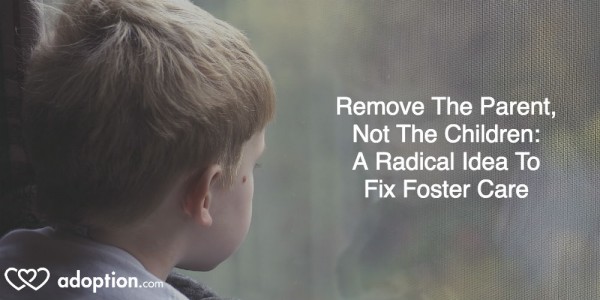Are you ready for a completely innovative and radical idea to improve the failing foster care system? If so, read on. In foster care, what if we removed the parent from the home, not the child? This is exactly what is happening in communities like the Misipawistik Cree Nation in Manitoba. Here is what these Canadian innovators had to say about this approach:
“The disruption and trauma felt by children who may be removed from their homes, separated from their siblings or removed from the community altogether is not an acceptable practice, when the child has done nothing wrong.”
I know this will be extremely controversial, but why not try it? What is the alternative? Why not make the parent go to an equivalent to a foster home?
Let’s take a look at how this works in Canada and how we could use it in combination with my idea of the professional foster parent who has received a Bachelor of Science in Foster Parenting.
Removing the Parent
Once a referral is received by child welfare services, a worker will go into the home and assess the situation. If they determine the need to remove the parent, the parent will be brought to a family member, and a respite worker will then move into the home and care for the children during the initial 48 hours. After the initial 48 hours, family members will then move into the home and take care of the child.
So, how could we make this work?
Bachelor of Science in Foster Parenting

In June 2017, I wrote an article on a new and innovative idea of creating a new educational standard in foster care. This would create an entirely new career field and create a full-time, highly educated, professional foster parent.
We could have two types of professional foster parents: Inbound and Outbound Foster Parents.
Inbound Foster Parent
This type of foster parent would play the traditional role, where the child (or children) moves into their home; however, they would be compensated well and being a foster parent would be their full-time job.
Outbound Foster Parent
This is where the truly innovative approach is developed. This type of foster parent would be like a doctor on call. When a parent is removed from their home by the child welfare service, this parent would move in for the first 48 hours. After that time, an assessment would be made (the Outbound Foster Parent would be the one who gets to make the call; after all, they would see exactly what type of life the children had been living). A decision would then be made to either have the Outbound Foster Parent stay, the parents move back in, or determine if another member of the family could move in. The goal here is to do everything possible not to move the child from the home.
What are the benefits of this approach?
So, could this work? Child welfare activist Cindy Blackstock definitely thinks it can. Blackstock remarked:
“You know, child removal at the best of times is really disruptive so the more you can keep things normal for a child in their own family home with their brothers and sisters, access to extended family members, the same school and having even access to your pets, the better it is for the child.”

Foster care is in need of creative leaders seeking radical change–leaders who will turn the system completely on its head. What it needs are leaders who embrace Moon Shot Thinking. This is where we shoot for 10x the improvement over what currently exists. Moon Shot Thinking is the combination of a large problem, a radical solution, and breakthrough thinking that just might make the solution possible.
This approach definitely meets the definition of Moon Shot Thinking. Here’s why:
1. It prevents disruption in the children’s lives.
2. Keeping the children in the home is less traumatic for the child.
3. This approach keeps siblings together.
4. Children remain in the same school system.
5. Parents are the ones who need rehabilitated and this forces the issue.
So, what do you think? Does this approach make sense? I think so. Essentially, this turns the tables on the parents and will potentially force them to improve their life. Most importantly, this approach is less traumatic for the children involved. After all, it’s not their fault.

